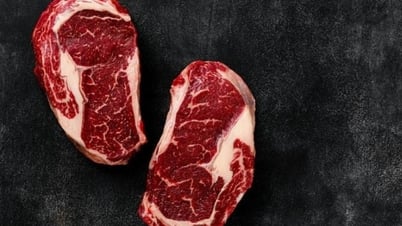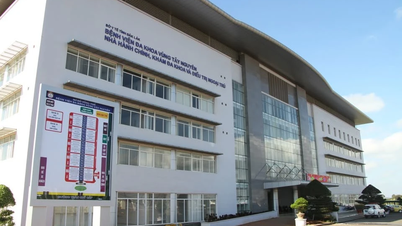
Eating too much red meat can affect your health - Illustration photo
However, according to experts, eating too much red meat is a risk factor for a number of diseases such as high blood fat, cardiovascular disease, cancer, especially colon cancer.
What is red meat?
Dr. Tuan Thi Mai Phuong - National Institute of Nutrition - said that according to the definition of the International Cancer Prevention Association and the American Institute for Cancer Research, red meat is the meat of mammals, and is called red meat because it contains a lot of myoglobin - a protein that helps bind iron elements and transport oxygen in the blood.
In addition, red meat will be red when fresh and unprocessed, and when processed, the meat will be brown. In a simpler way, red meat is the meat of livestock, red when fresh and in our meals, the red meats used are often pork, beef, veal, goat, lamb, rabbit...
First of all, it must be affirmed that red meat is an important source of animal protein. In 100g of lean pork there are 19g of protein, or in 100g of beef there are 21g of protein - meeting approximately 30% of the daily protein needs of an adult.
In addition, red meat is rich in trace minerals such as iron, zinc, and vitamin B12. According to the Vietnamese Food Composition Table, 100g of lean beef provides 1.6g of iron and 4.05g of zinc, about 1mcg of B12. In 100g of pork, there is about 1g of iron, 2.5g of zinc, and 0.84mcg of B12. This content is high compared to other foods.
Using a lot of red meat, the risk of many diseases
Dr. Phuong emphasized that a balanced and reasonable consumption of foods in general and red meat in particular is the key to maintaining and improving health. Eating too much red meat is a risk factor for a number of diseases such as high blood fat, cardiovascular disease, cancer, especially colorectal cancer.
This is the conclusion of the International Cancer Prevention Fund, based on the synthesis and analysis of data from many studies on red meat and processed meat consumption in different countries and ethnicities.
Thus, to balance the benefits of eating red meat (a rich source of protein and micronutrients) with the health risks (non-communicable diseases and cancer), specific guidelines on appropriate consumption are needed.
How to use red meat properly?
According to this expert, although the level of red meat consumption depends on many factors such as culinary culture habits, region, food availability according to natural geographical location, agricultural and livestock development policies of each country, but to ensure all people have good health, it is necessary to have knowledge and practice consuming red meat at a reasonable level.
The International Cancer Prevention Fund and the American Institute for Cancer Research have made the following recommendations:
Red meat should be consumed no more than three times per week, with the total amount of red meat in a week being about 350 - 500g after processing (equivalent to a maximum of about 700g raw meat and not including the weight of bones).
If calculated by day, the amount of red meat should not exceed 70g/day (cooked meat), equivalent to about 100g/day of raw meat excluding bones.
Thus, the recommendation gives a specific amount so that people can adjust the amount of red meat in their diet.
It is also recommended to use lean meat, increase the use of poultry, fish, eggs, and milk as foods to replace red meat in daily meals to ensure adequate supply of protein and micronutrients.
Source: https://tuoitre.vn/an-qua-nhieu-thit-do-gay-hai-the-nao-cho-suc-khoe-20251104124137508.htm






![[Photo] Opening of the 14th Conference of the 13th Party Central Committee](https://vphoto.vietnam.vn/thumb/1200x675/vietnam/resource/IMAGE/2025/11/05/1762310995216_a5-bnd-5742-5255-jpg.webp)































![[Photo] Panorama of the Patriotic Emulation Congress of Nhan Dan Newspaper for the period 2025-2030](https://vphoto.vietnam.vn/thumb/1200x675/vietnam/resource/IMAGE/2025/11/04/1762252775462_ndo_br_dhthiduayeuncbaond-6125-jpg.webp)










































































Comment (0)